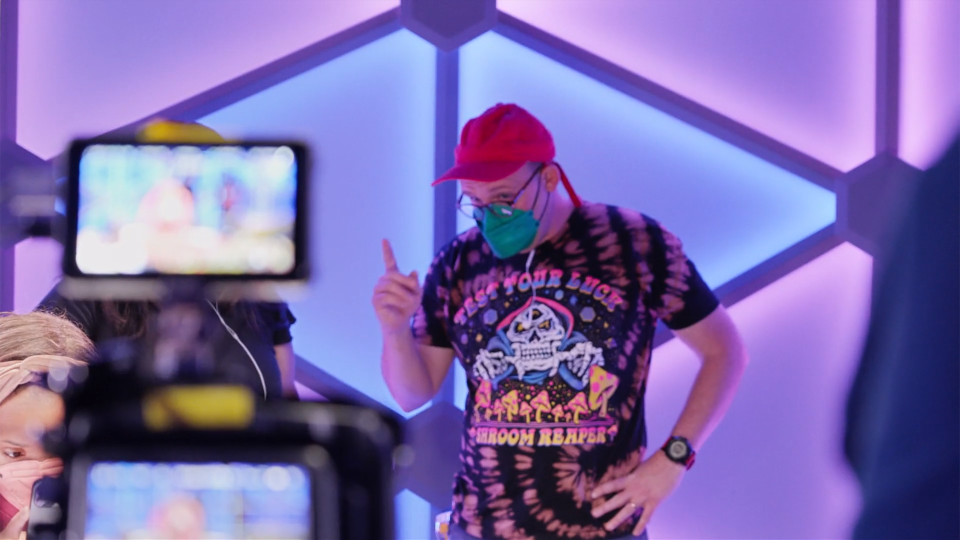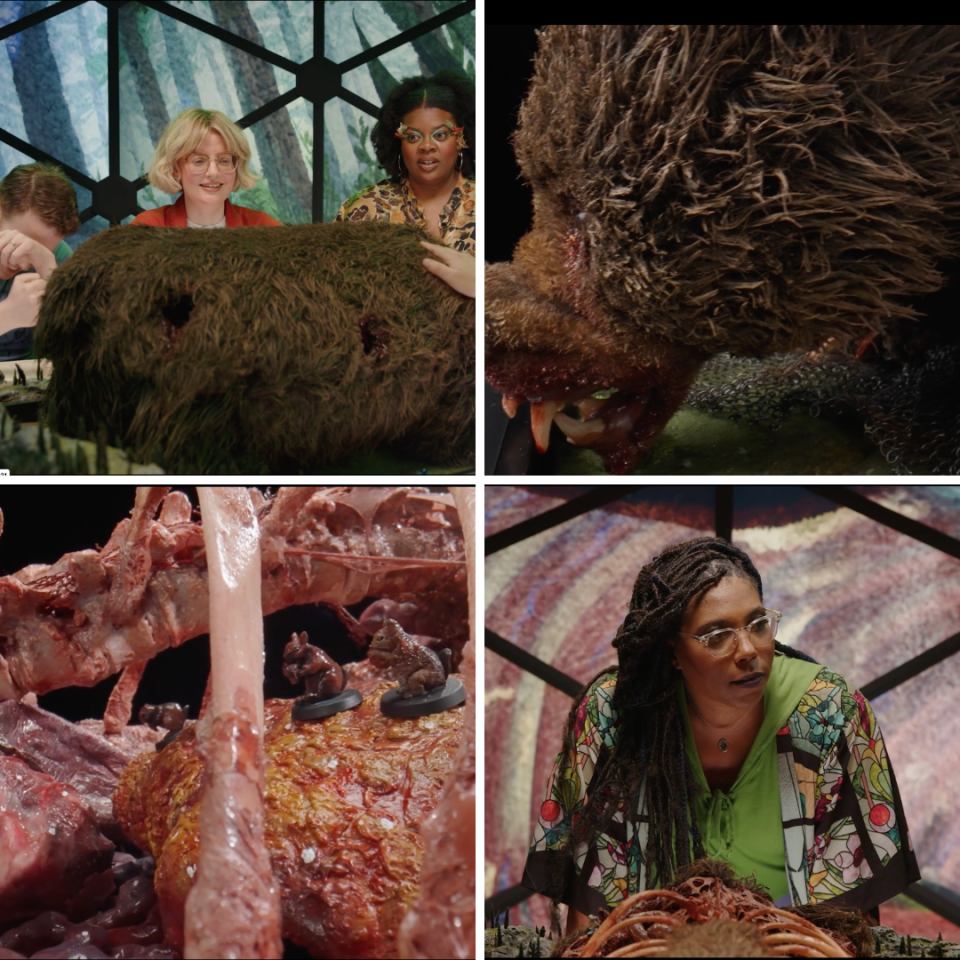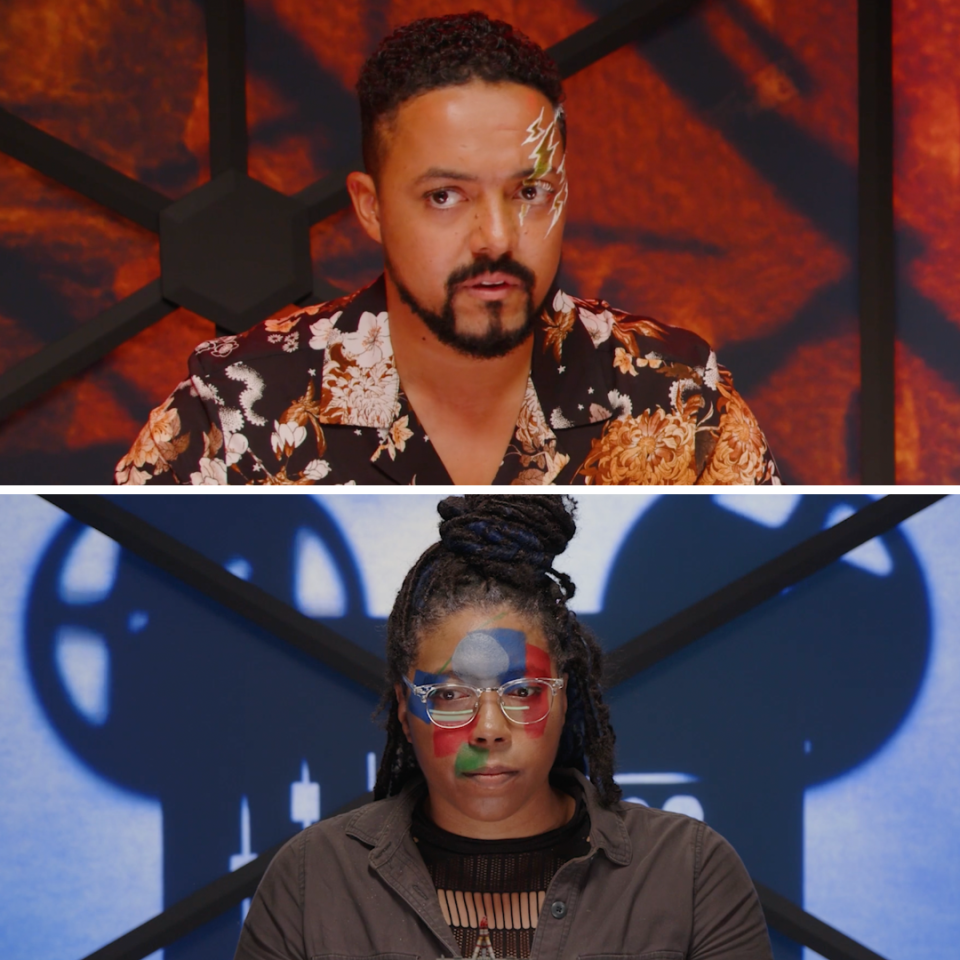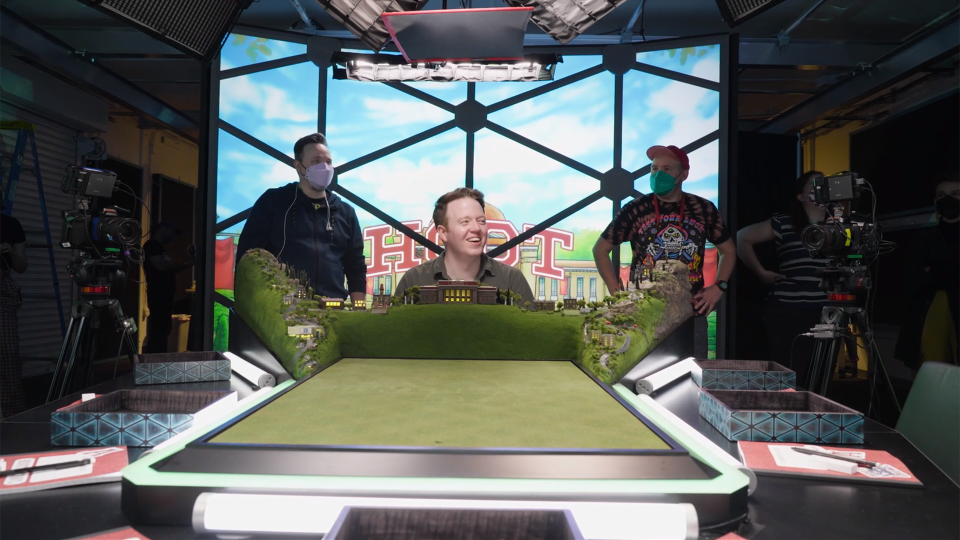How ‘Dimension 20’ Brings Tabletop RPGs to Life — and Zombie Bear Death

- Oops!Something went wrong.Please try again later.
- Oops!Something went wrong.Please try again later.
- Oops!Something went wrong.Please try again later.
- Oops!Something went wrong.Please try again later.
Anyone who hasn’t stumbled into the world of online Actual Plays is, first of all, missing out on a lot of fun, but second of all, hasn’t encountered the series of truly fascinating creative choices that the production teams behind them get to make. The form can involve any podcast or web series where a cast of actors play a tabletop role-playing game like Dungeons & Dragons for audience consumption, either taped in advance or streamed live on platforms like Twitch.
Actual Plays offer a dual sense of immersion for viewers: They simulate both the experience of playing with friends (who happen to be top-tier storytellers) and the pleasures of fantasy, heroic characters exploring inventive worlds, and outsiders banding together to fight forces of oppression. By showing the table, Actual Plays make the act of imagining into a team sport.
More from IndieWire
Dropout.TV‘s “Dimension 20” is an especially interesting case among Actual Plays since it is also an anthology series that uses the mechanics of tabletop games to create genre-mashup stories. One of the most immediately obvious examples of a “Dimension 20” season is “A Crown of Candy,” which is a “Game of Thrones” tale of dynastic intrigue and betrayal but set in a fantasy Candyland, with cast members playing chocolate bunny warlocks and peppermint rangers. Seasons can be as short as six episodes or as long as 18, as in “The Unsleeping City,” which brings D&D magic to New York City and, logically, makes Robert Moses (yes, that Robert Moses) the antagonist.
“Dimension 20” seasons are very limited-run affairs too. The Dropout show has returned to its “Fantasy High” setting — including the upcoming “Fantasy High: Junior Year” — but by and large, each season of the show goes to a completely new place and allows the show’s production team to stretch new muscles in their quest for that dual immersion: situating the camera and designing a set so that viewers feel like they’re at the table, and also that the “D20” table is a springboard to inhabit the world of the story.
Core to that mission is production designer Rick Perry, who has been a constant in the evolution of “Dimension 20.” Now, Perry is the subject of Dropout’s documentary “The Legendary Rick Perry and the Art of Dimension 20.”
Perry and his team are held most in awe by “Dimension 20” fans for their intricate battle maps and miniatures. Perry’s become extremely adept at “kit-bashing,” which involves taking bits from different miniature kits and combining them to create a new piece, since no one really manufactures corn that wants to kill you or a grizzled knight who is also a gummy bear. But for Perry, the sheer scale of “Dimension 20” is a challenge in itself.
“The elements that we build, whether it’s projections, illustrations, battle maps, props, it’s really a huge amount of material,” Perry told IndieWire. “We need to know what kind of food the people eat and what their houses are made of. So there’s actually a lot of legwork on our end when we’re thinking about how to manifest this world into whatever the things are that we’re building.”

Perry, the show’s producers, director Michael Schaubach, and each season’s game master (who acts as creative showrunner in addition to running the game on camera for the players) brainstorm each season’s setting and setpiece and what core themes the entire production is driving towards. For the season that just finished, “Burrow’s End,” Perry and GM Aabria Iyengar inspired each other to find heretofore unearthed levels of horror for the characters.
“The coolest thing about Rick is he immediately starts pitching — and not like counter-pitching. It becomes collaboration for minute one,” Iyengar told IndieWire. “The [twist of the season] is that the last bastion is going to be at a nuclear reactor. ‘So what part of the world is it in? Like, do you want this, this, or this?’ He’s pulling up examples of different kinds of facilities in different parts of the world in real-time.”
The nuclear fallout at the heart of the setting is responsible for the characters’ powers and for the obstacles they come up against. One of the most notable of these, in Episode 2, is a zombified bear infested with parasitic chipmunks that the players, a family of stoats, need to defeat.

To create the bear at stoat scale, Perry took plastic (human) skeleton parts and combined them with the kind of taxidermy forms hunters use to mount kills. For the fur, “we needed something that, essentially, it’s like a suit. It’s been sewn and it fits very perfectly to his shape. But we didn’t want to have to do that from scratch, so we were looking at teddy bears and things that are sort of the right size, but the detail wasn’t enough. So we found this company in New York that makes stuffed animal seats,” Perry said. “It’s this giant puzzle-solving journey that we’re just trying to get to the end of.”
“When the bear map was revealed, I just remember like sitting on Twitter with [head of series production Carlos Luna] and Rick and being like, ‘Man, we got them. We grossed them out. I think someone barfed. Someone said they barfed. We did it. What a day. The dream,’” Iyengar said.
Even more than a decomposing bear that the players had to navigate — according to Iyengar there was a secret passage up its butt, and that’s partly why the bear was faced towards the players when it landed on the table — Perry’s choices for the miniatures and the set decoration informed the feel of the storytelling.

According to Iyengar, it was Perry who brought the idea of Cherenkov radiation, which emits a blue glow, to their discussions about the reactor at Last Bast. “Out of the gate, I was like, cool, we’re going to make the color green. Everything [will] have that reactor scary, ‘Simpsons’-coded radiation green. And Rick was actually the one that was like, ‘What if we blue code this season?’” Iyengar said. “That becomes a ripple effect across a lot of things.”
The ripple effect involves costuming and hair and makeup additions, as well as animation and lighting effects that create the sense for both players and the audience of being very small in a very large environment. “I want to tell as much story as possible. I want to land themes with the table so they know the vibes I’m trying to hit as they interact with each other and me as the rest of the world. And the same thing for the audience,” Iyengar said. Towards this end, Iyengar and the rest of the cast adopted bits of wood and trash as part of their hair and makeup, and Iyengar adopted a jumpsuit and anti-surveillance makeup once the characters reached the reactor.
There’s a scrappy, John Carpenter-esque aesthetic that Perry said began to assert itself when the creative were exploring the meaning of the season’s visual style. “The stoats would probably craft [them] out of leaves, and grass, and sticks, and scraps of paper, and they would use light and shadow to create this thing,” Perry said. “So that was how we worked out the aesthetic.”

Realizing the aesthetic of every season of “Dimension 20” alongside Perry, director Michael Schaubach reached for the filmmaking tools that would create the most dynamic environment possible. It’s not just that the cast gets to interact with miniatures and battle maps, but Schaubach and director of photography Kevin Stiller created ways to get the camera onto the map and perform all kinds of sweeping camera moves — with a camera system as bonkers and inventive as “Dimension 20” itself.
“[Our original DP Kenny Keeler] put a Dana dolly — which is basically a simple pipe track and then you have a platform. It has rollerblade wheels on it and you can just slide it — up at about chest height. And then on that, he had a complex matrix of C-Stand components that created a jib,” Schaubach told IndieWire. “He could jib. He could dolly. He could pan. So we could actually do [what I wanted and] come up from behind the table, fly over the lunchroom, and land on the corn monster.”
In the years since, Schaubach has overseen the quest for a different, even more articulable jib, updated cameras, an LED projection system that can add shadows and animation onto the walls of the set, and, in “Burrow’s End,” audio recordings presented as artifacts.
“The more I can give the audience, the more immersive it’s going to be,” Schaubach said. “And the reason why we like to make the show better and better every season is because the better we make the show, the more people will see the show, the more people will recommend the show, and the more people we can save — because ultimately what the show does, which was the biggest surprise for me. I started getting messages from people who were like, ‘The show saved me. The show showed me people at a table that look like me and I felt seen and they’re telling stories that are my story.’”
It seems only fitting, then, that “Dimension 20” is telling its own story, centering Perry’s work in creating the ability for viewers to see themselves in those stories. “I think the type of stories that we tell, the people that come to the table, the culture on set… everyone feels lucky to be there and very happy to get to come together and collaborate,” Perry said.
“The Legendary Rick Perry and the Art of Dimension 20” is now streaming on Dropout.
Best of IndieWire
Quentin Tarantino's Favorite Movies: 60 Films the Director Wants You to See
Where to Watch This Week's New Movies, Including 'The Iron Claw' and 'All of Us Strangers'
2023 Movies Shot on Film: From 'Oppenheimer' to 'Killers of the Flower Moon' and 'Maestro'
Sign up for Indiewire's Newsletter. For the latest news, follow us on Facebook, Twitter, and Instagram.

